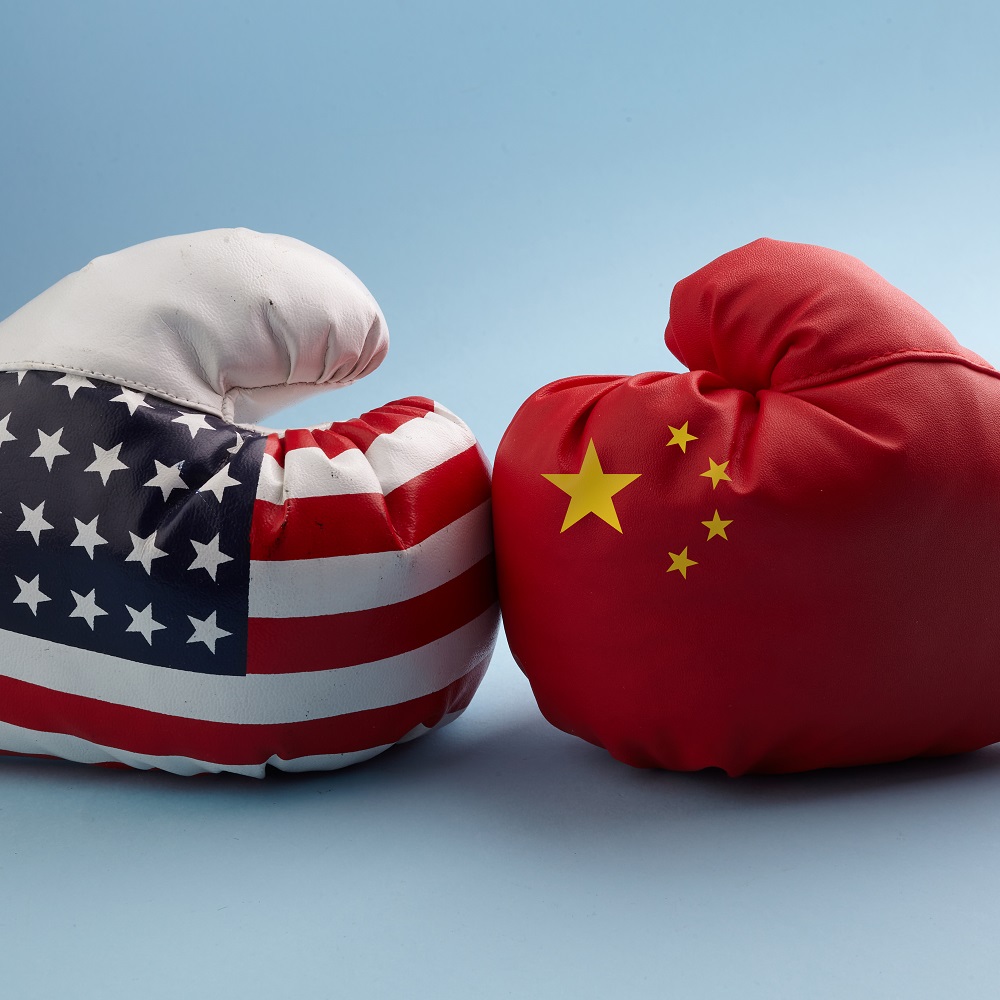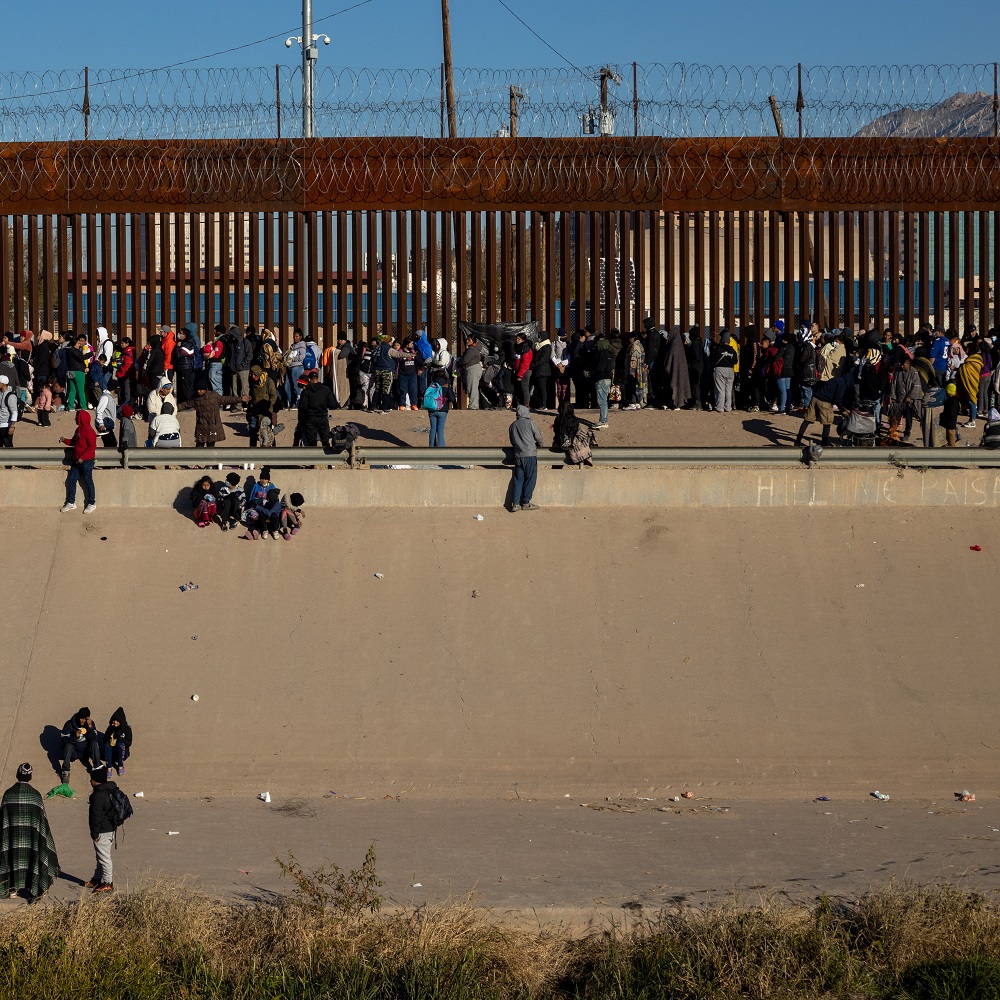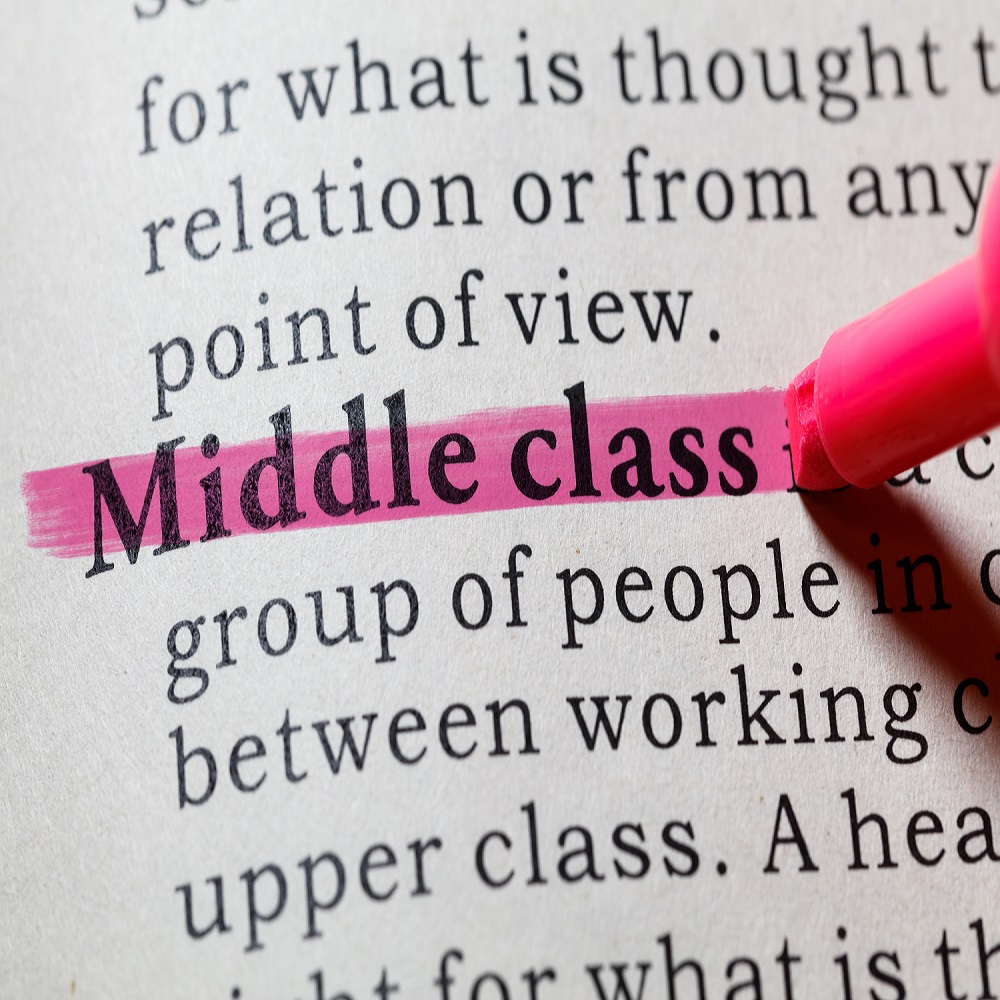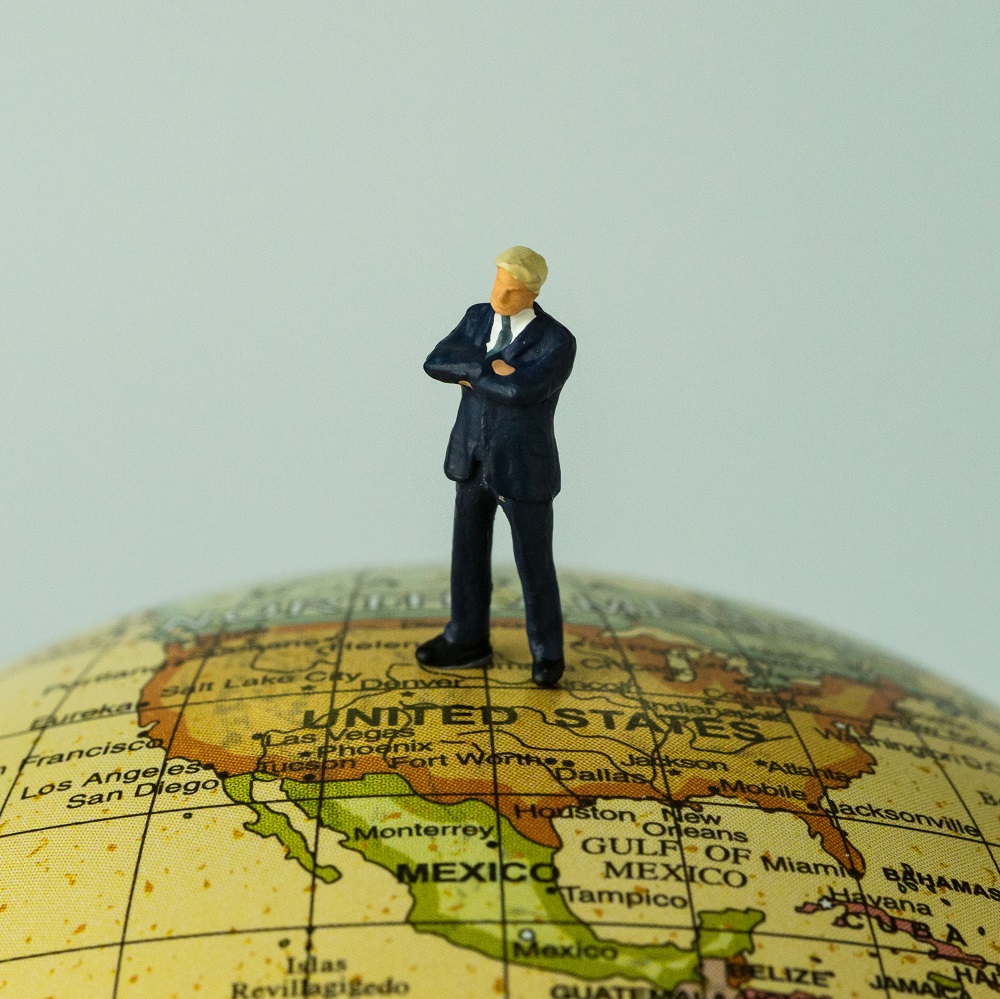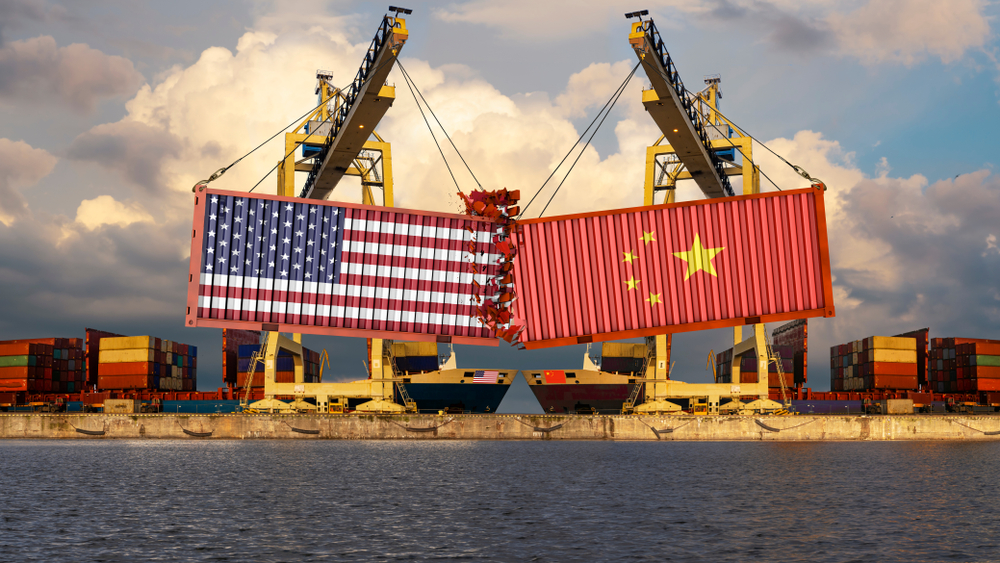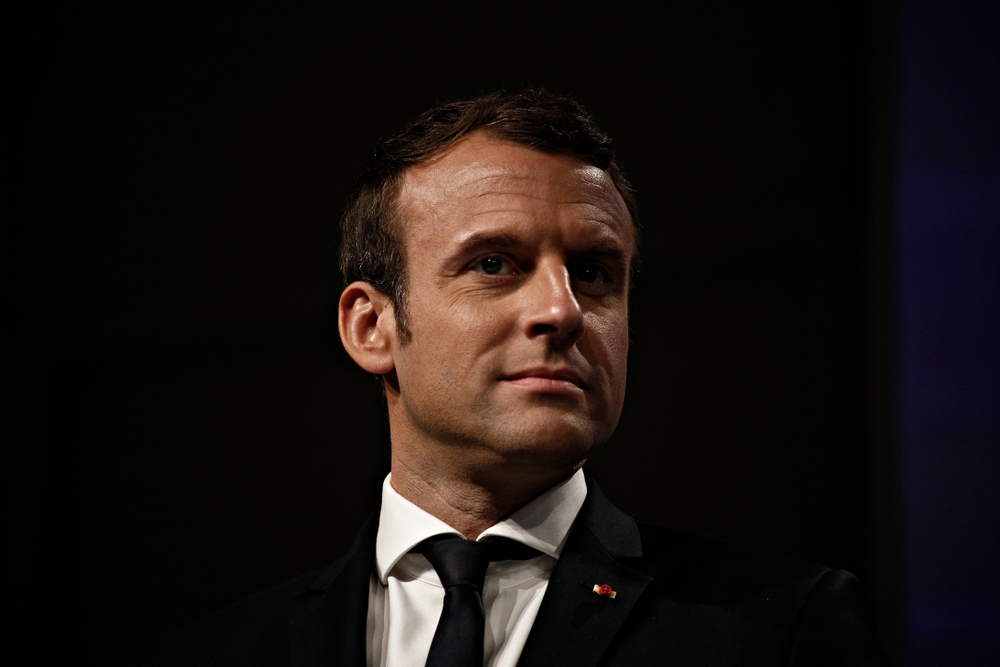Washington Declaration: Beyond Korea, What it Means for India?
by Jagannath P. Panda
In April 2023, South Korea and the United States released the Washington Declaration to reiterate and upgrade their treaty alliance. In outlining a joint nuclear deterrence strategy, the Declaration reaffirmed that South Korea would not pursue independent nuclear capabilities, and instead continue to rely on the alliance-based approach. This paper considers the strategic impact of the Washington Declaration beyond the U.S.-ROK nexus. Highlighting the importance of the agreement on security and stability in the broader Indo-Pacific region, this paper focuses on India’s stake in the new development. In particular, this paper emphasizes that despite its stated focus on the North Korean nuclear threat, the Washington Declaration also considers the Chinese and Russian threats in the region, making it of immense interest to India. It analyzes whether and how the Washington Declaration can complement India’s interests, and the potential for it to pave the way towards a closer India-U.S.-South Korea trilateral partnership in the Indo-Pacific. Introduction The release of the Washington Declaration in April 2023 has not just temporarily halted the Republic of Korea’s (ROK or South Korea) ambitions of developing its own nuclear weapons, but has also given more attention to the debates on nuclear deterrence in the Indo-Pacific. Even as the United States is concerned about growing nuclear developments in China, Russia, and North Korea (or the Democratic People’s Republic of Korea, DPRK), it is primarily focused on countering China – “the most comprehensive and serious challenge to U.S. national security.” Given that China’s military activities in its extended neighborhood, including in the Taiwan Strait, South and East China Seas, and the Himalayan borderwith India, have attained built greater momentum in the past decade, the Declaration assumes greater significance: As a forward-looking step to mollify U.S. treaty allies and partners in the region with the larger aim of bolstering a “cooperative” approach against the growing nuclear threat. In this context, even as the Washington Declaration does not directly impact India, its implications for the IndoPacific amid India’s substantial role in the budding IndoPacific security architecture compels a closer examination into the new debates centered on South Korea’s extended deterrence. India is a “special strategic partner” for the ROK: Post the launch of the ROK’s Indo-Pacific strategy in December 2022, the two are exploring their increasing strategic convergence via respective inclusive policies as “pivotal” Indo-Pacific partners. Therefore, the security concerns in East Asia are not just important for India because of the domino effect on South Asia—home to near-perpetual instability due to the three nuclear states of China, India, and Pakistan—but also in terms of the negative impact on India’s (as yet) nascent efforts to boost multilateralism, middle power coalition, and regional integration. Can New Delhi capitalize on South Korea’s gains from the U.S.’ latest declaration against North Korea’s and China’s nuclear threats? Could the Washington Declaration complement an envisioned India-ROK-U.S. trilateral in today’s divisive geopolitics? Could the new nuclear debates focusing on extended deterrence engender mechanisms for strengthening South Asian nuclear stability? Contextualizing the Washington Declaration Beyond the Peninsula Undoubtedly, the bilateral summit, including the Declaration will have an impact not just on the ROK but also on all stakeholders in the region—from U.S. partners like Japan and India to nuclear rivals China, Russia, and North Korea. What does the new pact bring to the fore for the ROK? In what ways will the latest U.S. approach to the Korean Peninsula affect the Indo-Pacific security landscape and partnerships, particularly for India? Parsing the Declaration – (Not) New Significance for ROK? In April 2023, the ROK-U.S. bilateral summit in Washington commemorated the 70th anniversary of the ironclad U.S.-ROK alliance—the duo’s dynamics have evolved from security treaty allies under the Mutual Defense Treaty, signed in October 1953, to global comprehensive strategic allies in May 2022. Presidents Joe Biden and Yoon Suk-yeol, through their joint statement, press conference, and a separate “Washington Declaration”, reiterated the shared commitment under the Mutual Defense Treaty, as well as toward establishing peace and stability in the IndoPacific. Moreover, Yoon’s state visit resulted in a stream of “political understandings” that ranged from billion-dollar economic and environmental tie-ups to technological and developmental cooperation. However, the event that has grabbed the maximum eyeballs is the Washington Declaration—unveiling new measures to concretize the “ambitious path” to secure the U.S.-ROK defense and global security cooperation and advance shared priorities in the Indo-Pacific. This new pact claims to further the credibility of U.S. extended deterrence measures—referring to modernizing the U.S. capabilities, including nuclear forces, to deter attacks on allies, as also discourage allies from going nuclear, in the increasingly threatening regional security environment. For instance, the U.S. has constituted at the assistant secretary level a Nuclear Consultative Group (NCG) to assuage the ROK about the U.S.’ intent to formulate a consensus-based approach to handling the North Korean threat. This includes not just enhancing deployment of U.S. strategic assets, including nuclearcapable platforms, in and around the Korean Peninsula, but also augmented information-sharing, joint contingency planning, and an inter-agency table-top simulation. One of the most important objectives of this comprehensive outcome was to showcase to the domestic public in South Korea that the U.S. is a long-term reliable security partner—while also exemplifying the same for the other U.S. allies and partners in the region, such as Japan. The U.S.-Japan-ROK trilateral is a central aspect in the Northeast Asia deterrence measures given that they face common threats from North Korea. Yoon has already opened the doors for a “three-way” strategic and nuclear planning “at any time” in the future to boost the combined response to a nuclear contingency: “The Washington Declaration is a bilateral agreement between Korea and the U.S., but we do not rule out Japan’s participation.” Already, there are speculations about Japan joining the NCG. For the present, the three countries have agreed to strengthen trilateral military cooperation including regularizing ballistic missile defense exercises and antisubmarine warfare exercises. They have also initiated efforts toward a “data sharing mechanism to exchange realtime missile warning data before the end of the year,” in line with the November 2022 trilateral leaders’ summit commitments. At the same time, the Declaration has put on hold, even if temporarily, South Korean goals to build autonomous nuclear weapons. Yoon, who has been facing criticism at home for not heeding the extraordinary public support for acquiring an indigenous nuclear weapons program, had earlier this year stirred up a hornet’s nest by openly declaring nuclear weapons development as a possible policy option, which at the very least pushes the U.S. to re-deploy nuclear weapons. However, the Declaration clearly reaffirms the ROK’s continued commitment to the Nuclear Non-Proliferation Treaty (NPT) and the new 123 Agreement, with the U.S. president as the “sole authority” to launch nuclear weapons. It has therefore curtailed any independent nuclear notions for the near future and only served to strengthen the ROK’s alignment with the U.S. view of the global non-proliferation regime. Consequently, the response in the South Korean media was subdued, if not sweepingly critical. Despite Yoon hailing the alliance as “nuclear based”, polls conducted during April-May 2023 (by the Korea Institute for National Unification, KINU) showed a significant drop in public support for the ROK going nuclear, especially in cognizance of the risks involved. The ROK government describing the Declaration as a Mutual Defense Treaty 2.0 or attesting to its “nuclear sharing” aspect have been touted as “false claims”; U.S. officials have also noted that the Washington Declaration is not a “de facto nuclear-sharing” agreement. Importantly, questions have been raised domestically about South Korea paying a “high price” in return for “hardly … any substantive changes” in the U.S. nuclear policy on South Korea—sharply referred to by some domestic critics as “a redundant declaration produced by mutual distrust in the South Korea-U.S. alliance.” In concrete terms, the pact has been likened to the “jettisoning” of South Korea’s right to protect itself from the nuclear threat from North Korea—U.S. President Biden has categorically stated that he has the “absolute” authority as commanderin-chief to use nuclear weapons even though it would be in consultation with the allies. There are also legitimate concerns about the agreement having turned China and Russia into “de facto adversaries”. Misgivings have also been raised about the lack of U.S. assurance on increased business and investment ties, including in semiconductors and green technologies—areas where closer ties with the U.S. could help reduce Korean dependence on China. The Chinese state media has raised serious concerns about the ROK “sacrificing” its “win-win” economic ties with China, but at present, maintains that “cooperation remains an irreversible trend in the long run.” Regarding these worries, some political observers in Seoul have contended that the ROK need not go back to its “strategic ambiguity” approach to pursue economic ties with China. This is primarily because countering China’s rise as a strategic challenge while maximizing economic benefits is a concern faced not only by the ROK but all liberal democracies in the present complex, transitional geopolitical scenario. Notably, the North Korean response has been predictable, calling it an opportunity for the DPRK to “perfect” its nuclear option; the official DPRK statement labeling it a “nominal” declaration highlights that the Kim regime sees it as business as usual. A disconcerting aspect of the Declaration, even though it is in line with the sentiment of the times, has been the relegation of “pursuit of dialogue and diplomacy” with North Korea to a byline at the end. It indicates a closing of doors on diplomacy, albeit with a rogue state (namely the DPRK) unwilling to compromise, but nonetheless important given the near-consensus about the Declaration being an “evolution” in deterrence but not a panacea for the peninsular concerns. Some have also contended that “these outcomes will likely not provide enduring solutions to the North Korea challenge.” Another notable issue that would have impacted the U.S.- ROK summit is the fallout from leaked U.S. intelligence documents, days before Yoon’s state visit, which suggested that the United States was spying on one of its foremost treaty allies. There are concerns in South Korea that the U.S. has “already penetrated into the Korean government’s networks and intercepted communications, possibly including phone and email.” As the U.S. has been accused of spying on the ROK in 2013, too, when its extensive surveillance program was exposed in press reports, the mistrust between the allies is likely to re-surface time and again. Therefore, in view of the South Korean government’s restlessness and nuclear claims prior to the April joint statement, there is some truth to the assertion that the Declaration arises out of the need to downplay the U.S. allies’ misgivings and trust issues. Its importance hence lies in shoring up of the U.S.-ROK partnership amid fears of the current security situation in Northeast Asia and the Indo-Pacific becoming worse due to the growing divisions in global geopolitics. Nonetheless, Yoon’s embrace of “strategic clarity” for the Indo-Pacific construct; sanctions on Russia during the Ukraine war; the success in resuming the U.S.-ROK-Japan trilateral in the past year; and the importance accorded to Yoon’s state visit, including the broad-ranging joint statement and the not-so-definitive yet formidable Washington Declaration, all highlight that the upward trajectory of the U.S.-ROK bonhomie is not a superfluous achievement. It points to a steady, forwardlooking alliance with implications for the wider IndoPacific. Ascertaining India’s Interests At a broader level, for the Indo-Pacific, especially for U.S. allies and partners in the region, the 2023 Washington Declaration is a sign of the U.S.’ willingness to negotiate the partners’ growing need for an inclusive, if not entirely equal, cooperation mechanism. Such an approach will not only strengthen the respective bilaterals with the United States but also present a stronger coalition in the fight against both North Korea and China. The latter is intent on destabilizing the existing status quo through its military aggression—from the Taiwan Strait to the Himalayas. For India, which has been facing the brunt of China’s military tactics along the Line of Actual Control (LAC) with an increased frequency in the past decade, the Washington Declaration highlights a strengthening of like-minded partnerships in the continuing democratic face-off against China. Thus, the Declaration’s impact is felt in Indo-Pacific geopolitics, including India’s immediate neighborhood— particularly as it compels the ROK to sharpen its global pivotal leadership by embedding itself deeper in the U.S.- led Indo-Pacific construct. Though the Declaration is specifically targeted against North Korea, not China, the evolving alliance is a response to the ever-growing threats in and around the Korean Peninsula, as well as in broader Asia: From Central Asia to the Middle East; the Himalayan States to the Indian Ocean; the South China Sea to the East China Sea, China’s diplomatic-economic clout and military presence is growing. In short, the Chinese threat is the main concern for the U.S. As a result, China’s Foreign Ministry Spokesperson Mao Ning was stringent in his criticism of the new pact: “What the U.S. is doing ... provokes confrontation between camps, undermines the nuclear nonproliferation regime and the strategic interests of other countries.” China was also immediate to voice its opposition against Japan’s potential involvement through the Washington Declaration, after Yoon was positive about turning the bilateral agreement into a trilateral one in the future. The inclusion of the phrase “peace and stability in the Taiwan Straits” and critical technologies cooperation in the joint statement also raised hackles in China in terms of South Korea isolating China and crossing its red lines. China sees this agreement as another U.S. tool to strengthen a values-based security coalition in the region à la Quadrilateral Security Dialogue (Quad comprising Australia, India, Japan, and the United States). The Quad’s successful bonhomie has not only inspired other such U.S.- led platforms (e.g., the latest with Australia, Japan, and the Philippines and the West Asian one with India, Israel, and the UAE) but has also become a thorn in the side of China’s goals of regional dominance. Any deterrence for China’s growing ambitions is in India’s interests, which is not only facing a continental threat but also recognizes China’s growing reach in India’s traditional stronghold of the Indian Ocean region. Consequently, despite not being directly connected to this agreement, India may nonetheless benefit from the Washington Declaration in a number of ways both in the Indo-Pacific and the Korean Peninsula. Firstly, the Declaration is critical to increasing the Quad’s strength. The reaffirmation of U.S. commitment to its Indo-Pacific allies and partners, including India, will not only boost the Quad but also set the stage for renewed deliberations on the Quad “Plus” framework, of which the ROK is a part, thereby opening up more avenues of India-ROK collaboration. In turn, such integration of South Korea with the Quad will further push the North Korean agenda onto the Quad’s table. Secondly, in response to Chinese (and North Korean) aggression, the Washington Declaration emphasizes the need for maintaining the status quo in the Indo-Pacific and rejects any illegitimate maritime claims, militarization of reclaimed features, and coercive actions. This might be seen as normal diplo-speak; however, it will further concretize the ROK’s aims to build greater maritime collaborations, including naval deterrence capabilities, in the Indo-Pacific. For instance, the Chungnam frigate (FFX), launched by South Korea’s Hyundai Heavy Industries (HHI) in April 2023, will be incorporated into the ROK Navy— its second-largest naval expense. Such an investment is poised to contribute to stronger South Korean presence in the Indo-Pacific in line with its newly launched IndoPacific strategy. It is a positive development for India, which is looking to bolster its IOR presence through likeminded partners like the ROK, the European Union and its members, and Japan. Here, it is also important to note that even though the ROK has traded off its nuclear development ambitions for “deeper, cooperative decision-making on nuclear deterrence” in the Washington Declaration, the road to fulfilling its nuclear-based ambitions has not closed down. In the future, for instance, Seoul might still be inclined to renew its post-AUKUS (Australia-UK-U.S. defense pact) demands to gain access to the U.S.’ nuclear-power submarine technology. India, which is one of the few countries to have nuclear-powered submarines with ballistic missile launch capabilities, can use this opportunity to further increase naval exercises with the ROK, along with making a stronger push towards defense technology and manufacturing collaborations. Thirdly, India and South Korea are strengthening their bilateral and regional relationship based on democratic and inclusive visions, characterized by the centrality of the Association of Southeast Asian Nations (ASEAN). Their future-oriented partnership has a sound foundational convergence, namely the Act East Policy (AEP)-New Southern Policy (NSP) Plus connect. Notably, the degree to which the Yoon government embraces India’s AEP (and Indo-Pacific vision) will not only determine the natural progression of India-South Korea regional relations but also provide momentum to diversification goals. The latter is important in light of the ROK’s growing security and techno-economic dependence on the United States at the cost of neglecting its long-standing economic partner China, as underscored by the latest joint statement and China’s response to it. In this context, India’s and the ROK’s quest for economic security, through participation in various regional and panregional forums, will enable them to build strategic links, and work together to balance regional developmental goals and their own economic-military growth. Both countries can use their participation in platforms like the Asian Infrastructure Investment Bank (AIIB) and the Indo-Pacific Economic Framework (IPEF) to build a stronger economic partnership. For example, the ROK, which joined the AIIB in 2015 and is the fifth-largest stakeholder of the AIIB with its shares at 3.86 percent, is looking to expand ties and find new joint project opportunities. India, as a founding member and the second largest shareholder with the largest project portfolio within AIIB, could facilitate the ROK’s enhanced contributions in the bank’s turn toward green infrastructure for providing “high-quality development finance.” India and ROK’s participation in forums like the Supply Chain Resilience Initiative (SCRI) and the U.S.- led Minerals Security Partnership (MSP) respectively, can help them coordinate their actions as they look to diversify critical value chains. The contested Asian and Indo-Pacific landscape has made supply chain diversification a priority. As U.S.-China trade and technological competition makes economic security vital, India and South Korea can build on their natural complementarities and work together to restructure their supply chains to reduce reliance on Chinacontrolled supply chains. While South Korea can support India’s goal of emerging as a manufacturing hub for key industries, India can be an important partner in South Korea’s aim to diversify its economic partnerships beyond China under the NSP. Lastly, if South Korea heeds to domestic criticism about “jettisoning” its strategic autonomy (that is, deferring to the U.S. by not acquiring a nuclear weapons development program), it will continue to diversify its partners, particularly in defense manufacturing and new technologies. Given that India and the ROK have expanded their defense cooperation, including joint production and export of military hardware, in recent years, the new pact will allow the ROK to push boundaries. For instance, the ROK could continue supporting India’s membership bid for the Nuclear Suppliers Group (NSG) or the MSP and India could facilitate South Korea’s increased participation in the Quad, a much-desired goal for Yoon. Moreover, ROK-India could partner for peaceful nuclear purposes. At present, India does not allow foreign direct investment in the nuclear power sector, but as per Indian media reports, the government is mulling changes in the near future. Their coming closer together, which is already in motion, will consolidate the middle power-dominated multipolar Asia architecture, primarily to mitigate the constraints due to the growing bipolar rivalry. It will further their common goal to achieve a global standing while preserving strategic autonomy. U.S.-ROK-India: A Trilateral Inches Closer? The latest U.S.-ROK summit and the Washington Declaration have certainly strengthened the U.S.-led alliance structure in the region, giving partners outside this alliance hope for a consultative and cooperative security mechanism for the region, U.S. primacy notwithstanding. What is clear is that a democratic values-based coalition will be able to successfully maneuver the ups and downs through the times and give impetus to the new-era security, economic, technological, and diplomatic cooperation. In this vein, the Declaration could be seen as a clarion call for unity to deal with the current hostile regional and global geopolitical circumstances. The boost to the Japan-ROKU.S. trilateral through this pact, as well as the bilateral summit’s assertion to implement their respective IndoPacific strategies while enhancing “Indo-Pacific voices in multilateral forums, especially in addressing climate change, sustainable energy access, and food insecurity,” could pave the way for other minilateral coalitions. India as a vital cog in the Indo-Pacific security network will naturally play a significant role. India’s increasing closeness to the United States as a counterweight to China and a strategic partner, especially in defense and technological areas, for a free and open Indo-Pacific (FOIP) makes it an important component in today’s U.S.-led liberal order, which is at a transition stage. Moreover, the bonhomie with South Korea is based on growing common values and interests of assertive middle powers, including strategic autonomy and global governance aspirations. India will be closely watching to see whether Seoul’s emphatic turn to “strategic clarity,”—first with its “Strategy for a Free, Peaceful, and Prosperous Indo-Pacific Region” and now the Washington Declaration—will enable the ROK to fulfill its middle power potential as a “technological, economic powerhouse.” In other words, for India, the new ROK approach could enable a deeper strategic connect between the two partners by moving beyond economic and limited regional ambitions. The new goals would have to include extended joint military exercises, joint manufacturing of defense equipment, expanded connectivity (digital and physical), regional integration initiatives, global supply chain resilience, increased green technology sharing, effective critical mineral collaborations (to lower dependency on China and Russia), and technological norms building, among others. Importantly, as both India and the ROK have signed the respective 123 Agreement with the U.S. on peaceful uses of nuclear energy, there is potential for cooperation in the power sector, as well as via technical exchanges, scientific research, and safeguards discussions. In March 2018, India and South Korea signed a bilateral civil nuclear agreement that allowed Korean companies to participate in India’s civil nuclear industry (including in atomic power plant projects and selling nuclear reactors to India). With energy security front and center on the global agenda in wake of the Ukraine crisis, trilateral cooperation in the civil nuclear sector can be an important step forward. Notably, nuclear exports are an important part of China’s Belt and Road Initiative (BRI). By 2030, China plans to build about 30 nuclear reactors abroad, worth $145.5 billion; it has already built four nuclear reactors in Pakistan (and is now building two more), has signed agreements to build reactors in Argentina, entered the UK nuclear market, and is currently negotiating with several other countries including Saudi Arabia and Kazakhstan. Amid the ongoing energy crisis, China’s foray into the global nuclear market could give it greater influence and potentially enhance its coercive power. In this context, the U.S., South Korea, and India have reason to bolster cooperation in this area and ensure they can stand as competitive nuclear vendors against China’s offer of advanced technology, competitive prices, and rich financing. India, the ROK and the U.S. have several shared interests and are already engaged in high-level cooperation at bilateral and multilateral levels; as such, a trilateral between the three powers would help coordinate their actions in pursuit of their regional goals. At the same time, for India and the ROK, any such trilateral cooperation could serve to provoke China and make managing the U.S.-China equation much more difficult. Nevertheless, while India faces a belligerent China on its border and South Korea is dealing with an economically coercive China, a trilateral partnership could be necessary to bolster collaborations and further shared interests. Furthermore, the benefits of a U.S.-ROK-India trilateral would be equally distributed to not just the three countries, but also other regional powers. Improvement of ties between Japan and South Korea—which is shaping up to be a focal point of both Yoon’s and Fumio Kishida’s leadership legacies—will gain smoother and faster traction owing to Japan’s close ties with India and the alliance with the U.S. Australia and Indonesia, too, have responded positively to South Korea’s Indo-Pacific strategy. The establishment of a new U.S.- led defense-ministerial level quadrilateral mechanism with Australia, Japan, and the Philippines is another shot in the arm for “allied and like-minded” countries. Therefore, the U.S.-India-ROK trilateral would draw on the bilateral gains and their common belief in ASEAN centrality to further regional integration aims. This will also give impetus to Seoul and Delhi (and also Canberra) emerging as strong candidates for an extended G-7. Overall, the Declaration sets the stage for a strong U.S.-ROK camaraderie that will extend beyond nuclear deterrence goals, impacting broader regional multilateral dynamics of the Indo-Pacific. Lessons for South Asian Nuclear Dynamics: Potential for Reassurance and Deterrence? In many ways, the Washington Declaration seeks to be a show of strength—and a reprieve—against the North Korean nuclear threat that has rapidly escalated over the past year with the sudden rise in missile tests and an expanding nuclear program. Since his election for presidency, Yoon has frequently expressed willingness for South Korea to be a more active player in the Indo-Pacific, including by being a part of the Quad framework. The Declaration is a part of Seoul’s efforts to meet its security goals. While it is certainly a significant step to counter the North Korean threat, it is also an indication of a stronger alliance against provocative actions by China. The bolstered U.S.-ROK partnership under the Declaration is a step towards a more proactive and stronger South Korea in the region, and could eventually ease the way for Seoul’s productive involvement in the Quad, perhaps through a Plus framework. While South Korea will still need to establish itself as a reliable partner with the other members of the Quad, the Declaration certainly demonstrates its commitment to regional (and global) security, and by extension, the important role it can play through greater interaction and burden-sharing with the Quad. Undoubtedly, this new bilateral agreement between the U.S. and the ROK (potentially also involving Japan through the trilateral) will usher in new lessons for the wider Indo-Pacific, and in turn for India, too. For instance, the prospects of closer consultations that will strengthen the combined defense posture are relevant for not just U.S. treaty allies like the ROK and Japan but central strategic security partners like India that is facing a two-front border escalation with China and Pakistan. However, could this new deterrence declaration in Northeast Asia pave the way for a common strategic mechanism between the U.S. and India that enhances deterrence and provides a degree of reassurance against the growing nuclear risk in South Asia? As much as it is possible that the U.S. extended deterrence for ROK would fuel an arms race, as also underscored by Russia and China in their response to the Declaration, not just in Northeast Asia but also in nuclear-heavy South Asia, it is often contended that “the drivers of nuclear instability in the region have more to do with conventional warfighting strategies.” The grave escalation in 2019 between India and Pakistan is one such example, and the accidental firing of a missile into Pakistan’s territory in 2022 that fortunately did not result in a retaliatory attack is another—both highlight the need to pursue definitive de-escalation and crisis management measures, and the latter puts a spotlight on the current fragility of the South Asian situation. The danger of an accidental nuclear war in such tense conflicts has not been stressed enough, and it bears repeating that such a threat was a constant refrain during the Cold War posturing. Broadly speaking, today, India and Pakistan are not signatories to the NPT but have been gradually increasing their nuclear arsenals. China is a nuclear weapons state recognized by the NPT, and has accelerated its nuclear development program. All are developing newer “ballistic missile, cruise missile, and sea-based nuclear delivery systems.” As of January 2023, Pakistan’s nuclear arsenal was about 170 warheads (by some estimates the stockpile might go up to about 200 by 2025), China’s about 410 nuclear warheads; and India’s about 164 nuclear weapons. Moreover, while India and China both have declared nofirst-use (NFU) policies, Pakistan has no such policy; its “full spectrum deterrence posture,” especially the development of tactical nuclear weapons capabilities for use on the battlefield to offset India’s (superior) conventional military tactics has been of concern to not just India but the United States as well. At the same time, recently questions have been raised about China shifting its nuclear policies, including the NFU, because of the nuclear expansion and modernization. Vis-à-vis India, too, there are speculations that “India could be transitioning towards a counterforce nuclear posture to target an adversary’s nuclear weapons earlier in a crisis, even before they could be used.” In this context, controlling escalation is not a conclusive plan of action, and dialogue, too, has limitations when the live-wire conflict, as it is with both India-Pakistan and IndiaChina, has historical roots and nuclear leverage. Also, India has called nuclear risk reduction an “interim” strategy; and as per its security review in 2003, India retains the option of nuclear weapons in the event of an attack by chemical and biological weapons. However, as part of its doctrine of credible minimum nuclear deterrence, including the NFU and non-use against non-nuclear weapon states, India is “prepared to convert these undertakings into multilateral legal arrangements.” Therefore, for South Asia, the U.S. and its partners, including India, need to focus on building creative, reliable mechanisms for limiting the possibilities of crossing the nuclear threshold, as well as controlling the use of highprecision conventional weapons. For example, India, Japan, South Korea, and the U.S. should either as a new minilateral or in conjunction with Quad (Plus) strengthen a strategic dialogue that looks into ways of information sharing, including intelligence on nuclear threats in the sub-region, as well as take into account India’s pursuit of “global, verifiable and non-discriminatory” multilateral legal arrangements for a nuclear weapon free world. Importantly, a vital tool that should be widely used is the dissemination of information about the dangers of nuclear weapons and the limitations of ballistic missiles among the public and policymakers. Lessons must be drawn from the South Korean scenario where public survey results in the recent past have highlighted a concerning trend of a high degree of support for nuclear weapons deployment without fully being made aware of the pitfalls. A recent study revealed that even in the U.S. and the UK, there is a lack of awareness about “nuclear winter”—a term used to illustrate the potential “catastrophic long-term environmental consequences from any exchange of nuclear warheads”— and that even brief exposure to these risks reduces the public’s support for nuclear retaliation. The dramatic lowering of public support for nuclear development is seen in the latest (aforementioned) KINU survey in the ROK, too, when presented with different possibilities of risks. Raising awareness and educating the public and decision-makers about such risks should also be part of the state’s strategy to reduce the heightened perceptions about nuclear weapons: the responsibility surely lies to a large degree on national governments and relevant multilateral organizations, which seem to have been caught napping. In the wake of the Washington Declaration, which has rekindled the nuclear debates in the Indo-Pacific, it is imperative that concerted efforts be made by all stakeholders, especially the nuclear states and the ones desirous of autonomous nuclear weapons capabilities, to first raise regional public awareness about the ramifications of nuclear armament, and only then pursue responsible deterrence measures.
